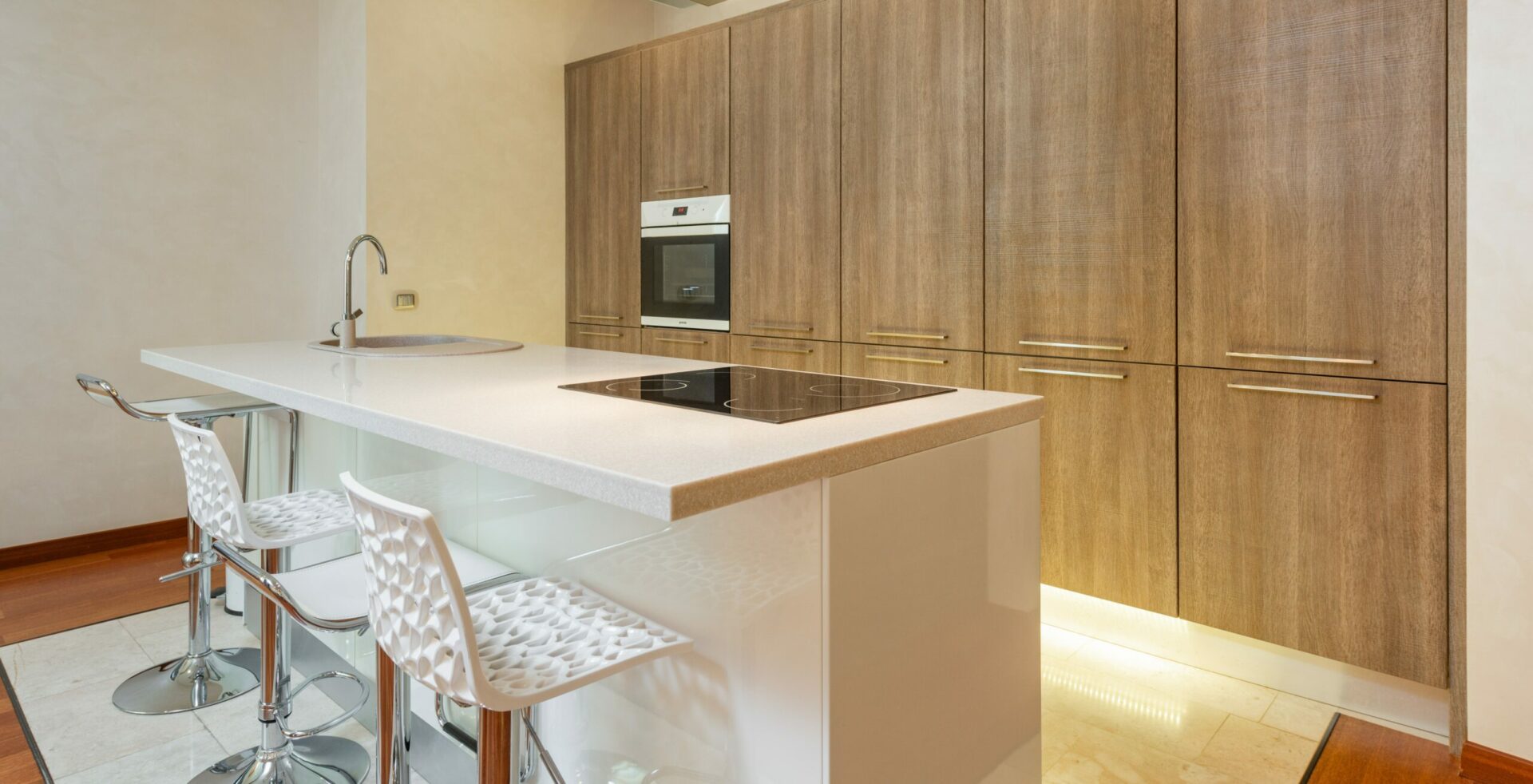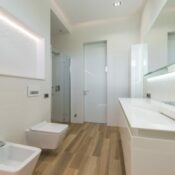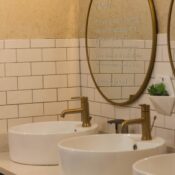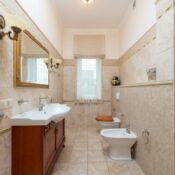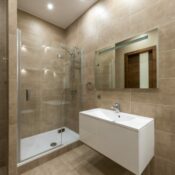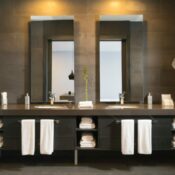If you were waiting for a sign to remodel your bathroom, then this is it! Renovating your bathroom will improve both its functionality and usability. Besides, it will improve the appearance of your bathroom space, ensuring that all users enjoy their experience inside. And for those looking to flip or resale their homes later on, remodeling the bathroom may even help to increase the overall value of your home.
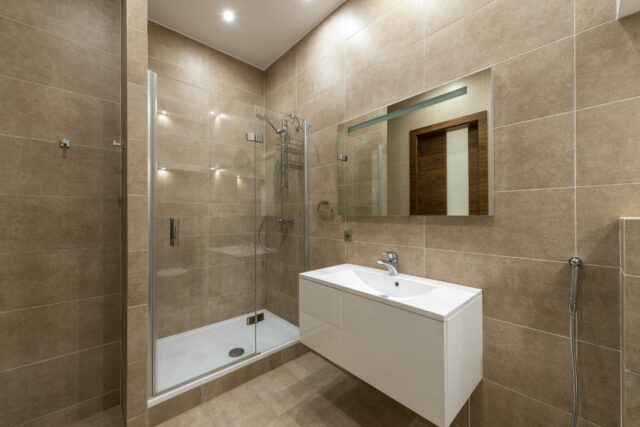
When it comes to remodeling the bathroom, the top crucial factor that you need to consider is tiling behind the bathroom vanity. If yours is a wall hung vanity, you may wonder: Do you tile behind a wall hung bathroom vanity unit or should you not? Read on this article to find out if tiling behind your vanity is essential and how it can be beneficial for your bathroom.
Do You Tile Behind a Wall Hung Bathroom Vanity Unit?
| It is not essential that you tile behind your wall hung bathroom vanity (or floating vanity) unit. On the contrary, whether you choose to tile or not entirely depends on your personal preferences. For example, while some homeowners prefer to tile the entire wall first then add a matching vanity unit, others choose to tile around the wall hung vanity unit.
Tiling the wall first before installing the vanity unit is ideal for homeowners who wish to avoid the tedious removal and re-attachment work that may require in the future. On the other hand, the latter option is preferred by the other homeowners since it helps to save on time, effort and money which would’ve otherwise been spent tiling the entire bathroom wall. |
RELATED = = = > Do You Need a Backsplash For Your Bathroom Vanity?
Factors to Consider Before Tiling Behind a Wall Hung Bathroom Vanity Unit
While tiling behind the wall hung bathroom vanity unit is not an intensive as tiling behind the entire wall, it is still not an easy job that you just jump right into. Rather, before you can begin this project, you need to consider several factors to help you make the best decision. After all, the last thing you want to do is “save” money by tiling just behind the vanity unit, only to end up using even more money tiling the entire bathroom walls when the need arises.
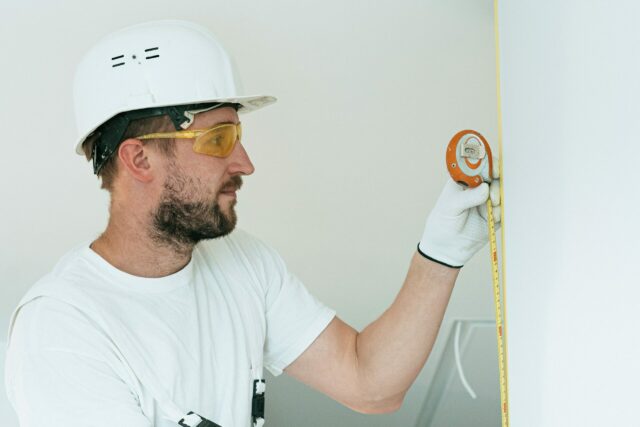
Here are the key factors that you should put in mind when tiling behind the vanity unit:
- Plans for redesigning the bathroom in the future
- The extent of the tiling you intend to do in the bathroom
- The type of bathroom vanity unit you intend to install.
- The labor required and type of installation needed for the tiling
Let’s look into each of these 4 factors and how they affect the decision on whether to tile behind a wall hung bathroom vanity or not:
How to Install a Wall Hung Vanity
A. Plans for redesigning the bathroom in the future
Before you can decide about tiling behind your wall hung bathroom vanity, you need to first think about any future improvements or renovations that you are planning to undertake. The type of plans you have for the bathroom can help you make the best decision on whether to tile just behind the bathroom vanity or tile the entire walls.
Take for instance, if you need to replace your bathroom vanity after some years due to damage, or the vanity unit being outdated. If the new vanity unit you choose to replace the old one with is not the same shape or size, it could expose the wall behind the vanity; a part which was not visible with the old vanity unit. So if you had not tiled the entire bathroom walls, this could mean a lot of costs, effort and time used to find and install new tiles to cover the exposed parts. Also, keep in mind that finding the exact tiles that match those that were originally used may not be very easy, especially if it has been several years since you last installed them.
On the other hand, if you had added only a splashback tiling, you would only need to add small tiling to the small exposed region, especially if you go for a smaller vanity unit. This would save you a lot of costs and time.
B. The extent of the tiling you intend to do in the bathroom
The extent of the tiling that you are planning to undertake in the bathroom can help you decide when to install the unit. For example, if you plan to tile the entire bathroom walls, you would do well to install the unit after the tiling project is done. On the other hand, if you are just planning to add a backsplash to the vanity, you can tile after installing the unit and mounting it in place.
RELATED = = = > Why Do Bathroom Vanities Have Legs?
C. The type of bathroom vanity unit you intend to install
With a built-in bathroom vanity, the wall behind the unit would be hidden from plain sight. Therefore, there would no need to tile the wall behind the vanity unit. On the other hand, freestanding units might expose some area behind the unit, especially from certain angles. Hence, it would be a good idea to tile the wall behind the entire bathroom vanity unit when planning to install a freestanding vanity.
D. The labor required and type of installation needed for the tiling
As mentioned above, tiling behind a wall hung bathroom vanity is not an easy job. It calls for more labor, efforts and money. Therefore, depending on the size of your bathroom vanity unit, you will need to calculate the costs required and determine how much budget you are willing to work with. Knowing your budget will help you make the best choice on which type of tiling and installation to choose.
Reasons Why You Should Tile the Entire Bathroom Wall
Whether you choose to tile behind your wall hung bathroom vanity or not depends on your personal preference. Even so, you stand to gain more benefits if you choose to tile the entire bathroom wall than just being the wall hung vanity.
Consider these 5 main reasons why you should tile the entire wall instead of only behind the wall hung bathroom vanity unit:
1. Allows for Future Customization and Renovation
After some years, you might like to renovate your bathroom and change up its look. Tiling a neutral color on the bathroom walls would make it easier to renovate the bathroom and even change its look. After all, most bathroom vanities and essentials match very well with neutral tiles, without appearing awkward or out of place. Therefore, if you are looking to achieve more customization options in your bathroom, you would do well to consider tiling all your bathroom walls.
2. Protects the Dry Wall
Tiling the entire bathroom wall helps to protect the walls against damage from water splashes, stains, scratches and kids’ writings, just to mention a few. And when any messes happen, tile is much easier to clean without leaving any grime, soap suds or permanent stains.
Simply put, the tiling makes it possible to keep the bathroom clean at all times. This is why it is recommended to tile your entire bathroom walls if you live with messy kids or tend to encounter situations that call for cleaning the walls regularly.
3. Creates a Uniform Look
Tiling the entire bathroom wall creates a uniform look in the bathroom, regardless of what color or theme is dominant in the room. Also, it eliminates the need to hang the mirror in a perfect position in the bathroom. This is because failing to tile the wall behind the mirror would force you to fit or hung the mirror perfectly and in such a way that the tiling does not seem out of place.
RELATED = = = > What are the Different Types of Vanities?
4. Caters for Future Homeowners
Are you thinking of relocating or selling your home in the next five to ten years? If so, the best choice to make when renovating your bathroom would be to tile all the walls for the sake of the next homeowners. A neutral color tile would be especially ideal as it would match with all colors and themes.
5. Allows for Custom Mirror Fit
When you choose to tile the entire bathroom wall instead of just behind the wall hung bathroom vanity, it becomes easier to install a custom built-in mirror. Tiling gives homeowners a wide range of options to be creative. For example, depending on the size of your floating vanity, you can choose whichever size of mirror you prefer.
How to Hang a Bathroom Cabinet on a Tiled Wall
Should You Tile Before or After Installing Your Vanity Unit?
When you choose to tile the bathroom walls before installing the unit, the entire wall would have the same tilling everywhere. On the other hand, if you choose to tile after installing the bathroom vanity, it would mean leaving a space behind the bathroom vanity that is free from tiling. And while this tile-free space may not be visible with the bathroom vanity unit in place, it would not be ideal if you needed to make any changes or redesign your bathroom in the future.
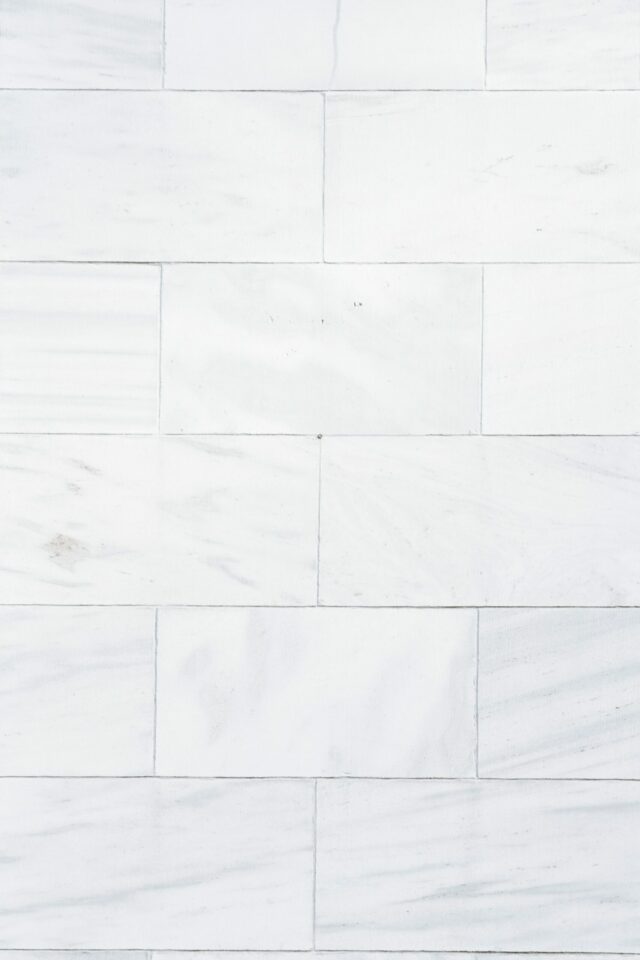
To help you make the best decision on when to do the tilling, think about the extent that you plan to tile your bathroom. If you are planning to tile your entire bathroom walls, the wisest thing would be to tile before installing the bathroom vanity unit. Doing so would keep your bathroom walls set for any changes that you may need to do in the near future, such as adding a new bathroom vanity or installing other units in the bathroom.
On the other hand, if you are only planning to add a splashback to the bathroom vanity, it would make more sense to tile after installing the unit. The main reason for this is that the splashback tiling would only have to sit behind the region that would be more exposed to water splashing, protecting this small area from water damage.
Frequently Asked Questions
Should I Add Tile Under Bathroom Cabinets?
Yes, it is a good idea to always add tile to the wall and under the bathroom cabinets. Adding tiles helps to prevent the development of mold and mildew due to water leaks. If left unattended to, the mold and mildew could lead to permanent damage of the flooring.
Do I Have to Tile Behind a Sink?
No, it is not essential to tile behind the sink. Most people prefer tiling behind the sink to prevent water leakages and splashes that could lead to damage of the walls. Even so, there are numerous alternative methods nowadays that can be used as both decorative and waterproofing materials for the bathroom walls.
RELATED = = = > Is it Cheaper to Buy a Premade Vanity?
Conclusion
So, do you tile behind a wall hung bathroom vanity unit? Well, it all depends on your preferences and the future plans you have for your bathroom. If you have more plans for the future of your bathroom, you would do well to tile the entire walls. This would make customization of the bathroom much easier, allowing you to achieve whichever look you intend. On the other hand, if you are okay with the current look of your bathroom, you can choose to tile just behind the vanity unit to prevent water damage or simply add a splashback; the choice is yours!
READ ME NEXT = = = >
Can I Leave the Dryer Running When I am Not Home?
